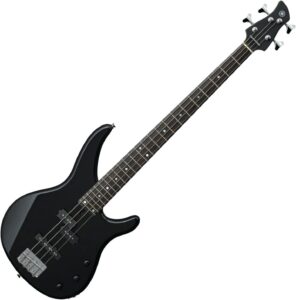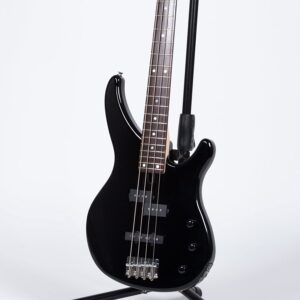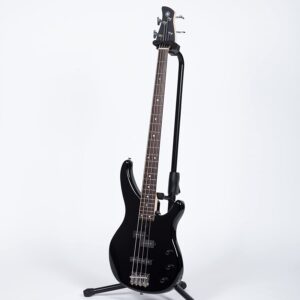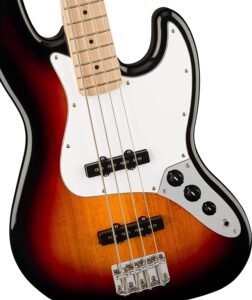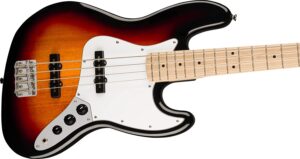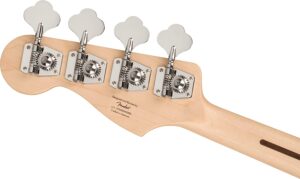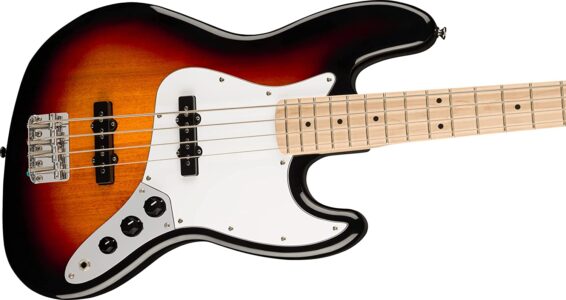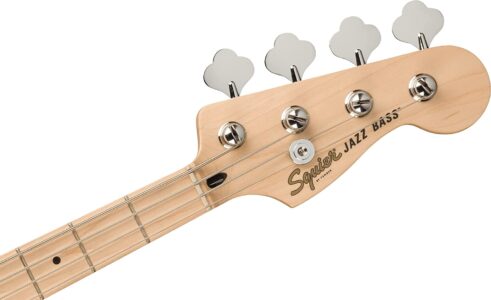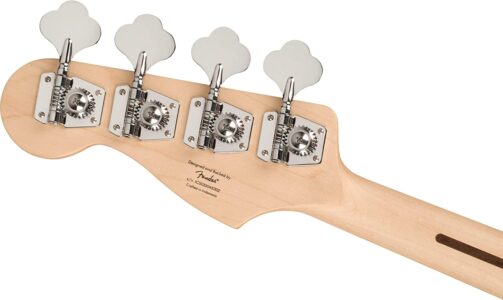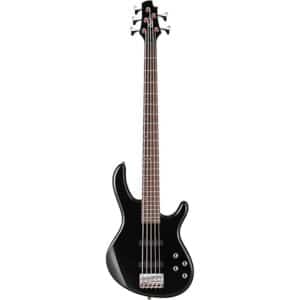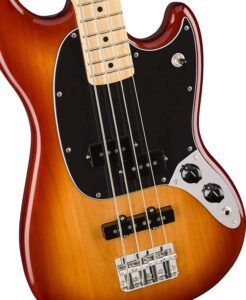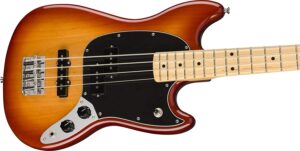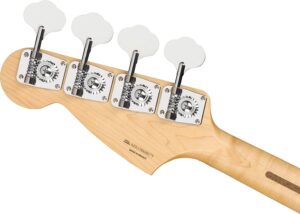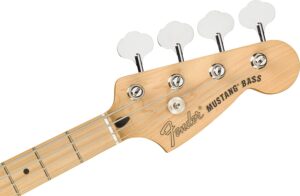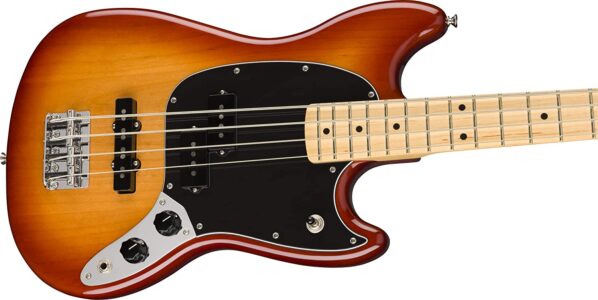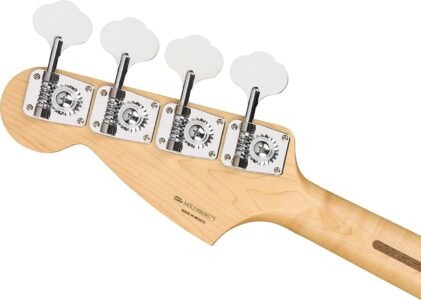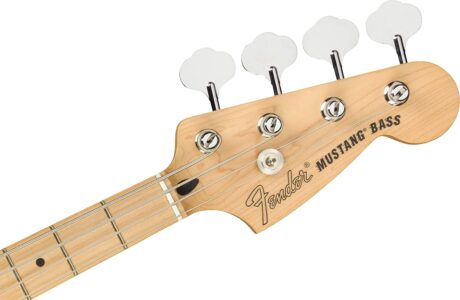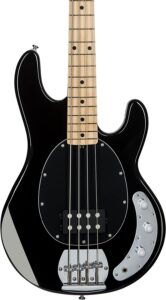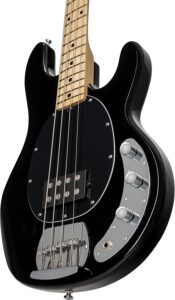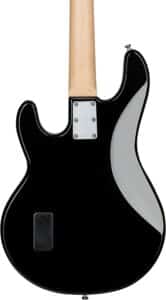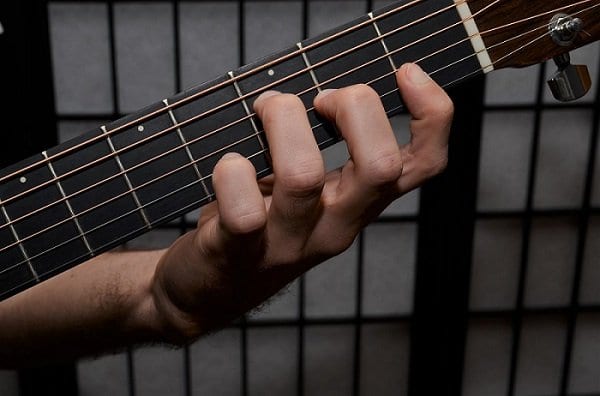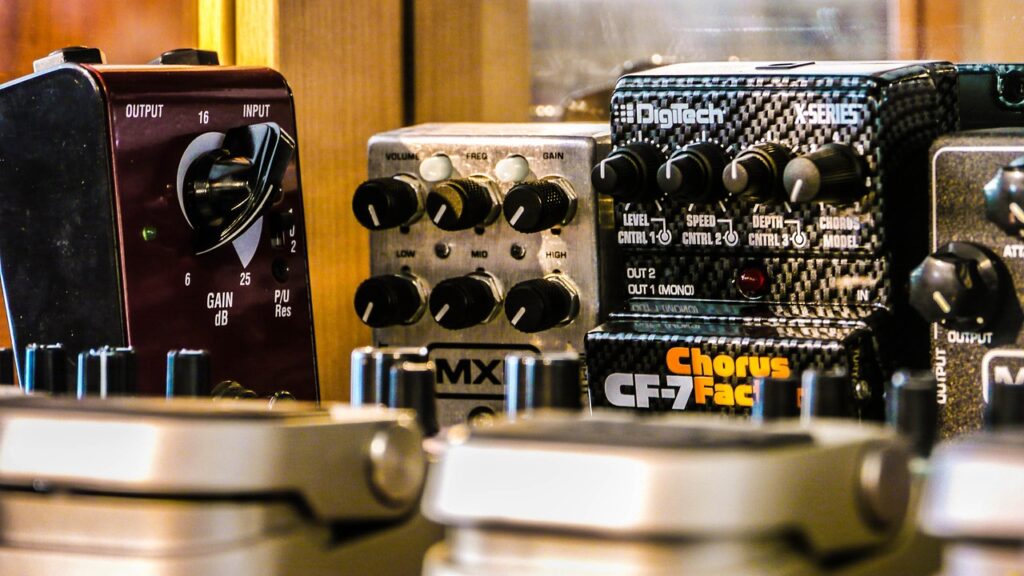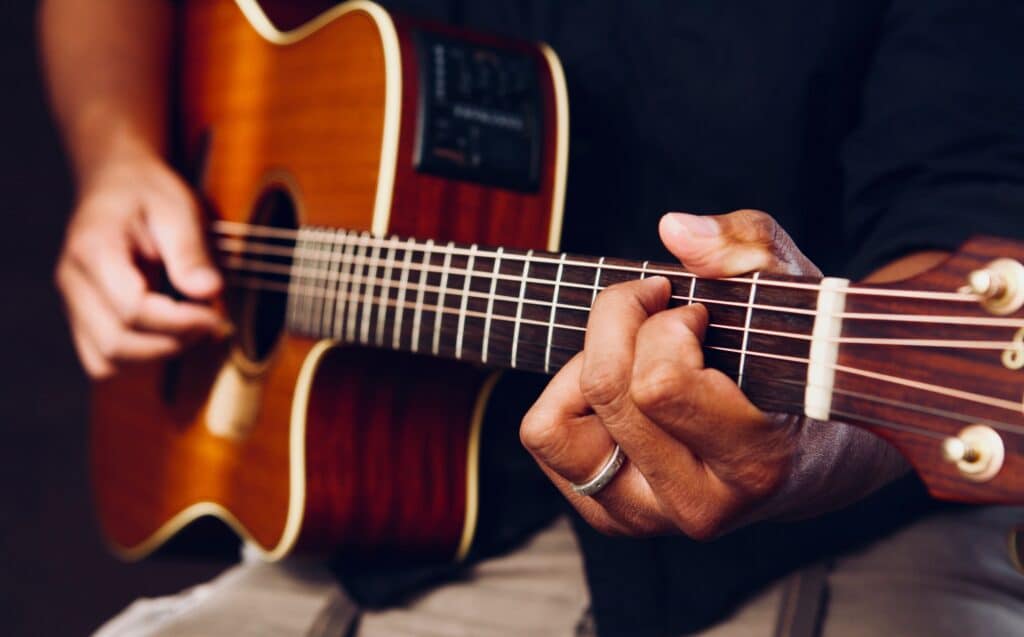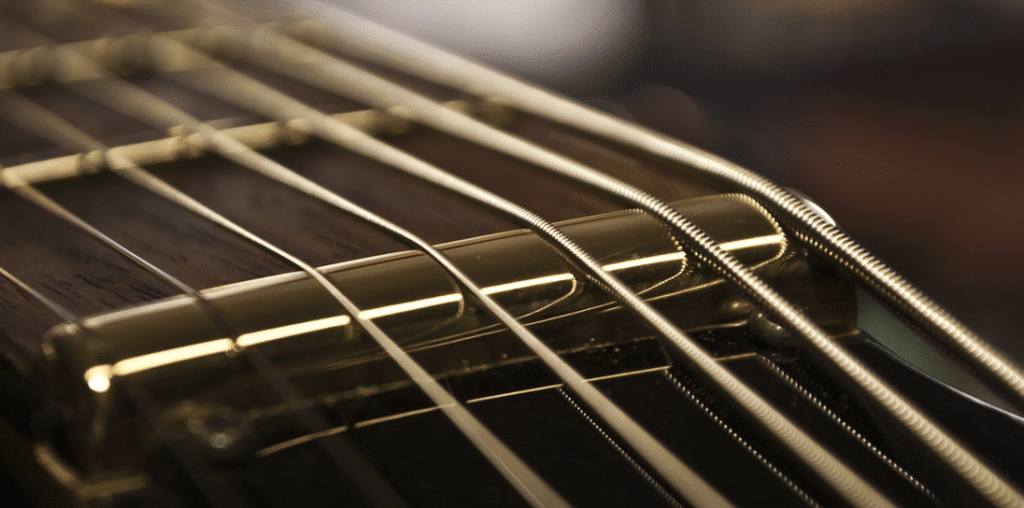Understanding the Basics of a Bass Guitar
Before diving into the world of bass guitars, it’s crucial to understand what a bass guitar is and how it operates. Traditionally, a bass guitar is a stringed instrument designed to produce deep, low-pitched sounds known as ‘bass frequencies.’ These frequencies lay the rhythmic and harmonic foundation of a musical piece, making the bass guitar an integral part of a band or ensemble.
Let’s look at some key elements that contribute significantly to the tone, feel, and overall playability of the bass guitar:
Body Type
A bass guitar’s body can be made from a variety of woods, each with its unique tonal characteristics:
- Mahogany: Known for producing rich, warm, and full tones, mahogany-bodied bass guitars are excellent for genres like rock and metal.
- Alder: Alder is a popular choice for bass guitar bodies due to its balanced tone with decent resonance in the low, mid, and high ranges.
- Ash: Offering a bright tone with excellent sustain, ash is a great choice for players looking for a more pronounced midrange.
The shape of the bass guitar’s body also matters as it influences the instrument’s balance and comfort. Experimenting with different body types can help you find what feels most comfortable when standing or sitting.
Neck Construction
The bass guitar’s neck is another critical aspect affecting both the sound and stability of the instrument. There are three primary types of neck constructions to consider:
- Bolt-On Necks: This is the most common neck construction, where the neck is bolted onto the body. Bolt-on necks offer a punchy sound with a good sustain and are relatively easy to adjust or replace.
- Set Necks (Glued-In Necks): Set necks are glued into the body. They typically provide more sustain and warmer tones than bolt-on necks.
- Neck-Through Designs: In neck-through designs, the neck extends through the entire length of the guitar body. Due to their complex manufacturing process, they deliver excellent sustain and stability but are usually found on higher-end bass guitars.
The shape and thickness of the neck, often referred to as the neck ‘profile,’ also impact the instrument’s playability. For instance, a thinner neck might be more comfortable for players with smaller hands.
Pickups
Pickups are the heart of an electric bass guitar, as they capture string vibrations and convert them into an electrical signal, which can then be amplified. The two main types of bass pickups are passive and active:
- Passive Pickups: The original type of pickups, passive models, provide a warm, dynamic, and vintage tone that’s perfect for genres like blues, jazz, and classic rock. They require no external power source, making them low maintenance.
- Active Pickups: These pickups use a battery-powered preamp to provide a clear, punchy sound with a higher output. Active pickups are great for players seeking a modern sound, as they offer excellent tonal flexibility and noise reduction.
Number of Strings
While most bass guitars come with four strings, five and six-string, variants are also available:
- Four-String Bass: The standard and most common type of bass guitar. The simplicity of having fewer strings makes these models ideal for beginners.
- Five-String Bass: These bass guitars add a lower B string, expanding the instrument’s lower range. This extra string can be beneficial for certain styles of music like metal, jazz, or progressive rock.
- Six-String Bass: A six-string bass adds a higher C string to the five-string configuration, offering an even broader range. Advanced players typically use these basses in genres that demand complex bass lines, such as fusion and jazz.
Factors to Consider When Buying a Beginner Bass Guitar
Budget
You might not want to splurge on your first instrument as a beginner. Luckily, you can find quality bass guitars in the $200-$300 range that provide excellent value for money. Consider other necessary expenses like a case, strap, amplifier, and maintenance tools when setting your budget.
Size and Scale Length
The scale length of a bass guitar is the distance from the bridge to the nut. A ‘full-size’ or ‘long-scale’ bass typically has a scale length of 34 inches. ‘Medium-scale’ basses measure around 32 inches, and ‘short-scale’ basses, around 30 inches or less. The choice between these depends on your physical comfort and the kind of tone you want. Shorter scales are easier to handle, particularly for younger players or those with smaller hands. They also produce a warm and vintage tone. On the other hand, long-scale basses offer a bright and punchy tone.
Genre of Music
Your preferred music genre can also influence your bass guitar choice. If you’re into rock or punk, you might prefer a Precision Bass (P-Bass) for its punchy and aggressive tone. If you like jazz or soul, a Jazz Bass (J-Bass) with its bright and rich tone would be an excellent choice. Those into metal might prefer a five-string bass for its expanded lower range.
Getting the Most Out of Your Beginner Bass Guitar
Regular Maintenance
Keep your bass guitar in the best possible condition by cleaning it regularly and changing the strings when they lose their tone. Also, learn how to set up your bass to suit your playing style. This includes adjusting the string action and intonation.
Learning Resources
Consider investing in some learning resources. You can find plenty of free online tutorials and lessons to get started, but hiring a professional teacher can greatly expedite your learning process.
Joining a Community
Join a community of bass players, whether online or offline. You can learn from the experiences of others, ask questions, and receive feedback on your progress.






